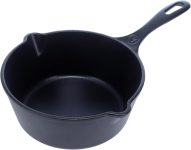
Black Friday Victoria Cast Iron Saucepan, Cast Iron Cast Iron Pot Review – Oemiu
Black Friday Victoria Cast Iron Saucepan and Cast Iron Pot Review: A Cook’s Companion?
The allure of cast iron cookware is undeniable. Its robust build, exceptional heat retention, and the promise of heirloom-quality dishes have captivated cooks for generations. This Black Friday, many eyes are turning towards Victoria, a brand known for its affordable yet reliable cast iron offerings, specifically their saucepans and versatile cast iron pots. But are these pieces truly worth the hype, and more importantly, are they a smart investment for your kitchen? This comprehensive review delves into the Victoria cast iron saucepan and cast iron pot, examining their features, performance, and overall value to help you make an informed decision this shopping season.
Victoria Cast Iron: A Heritage of Value and Durability
Victoria is a Colombian company that has been crafting cast iron cookware for over 80 years. Unlike some brands that rely on nostalgia and premium pricing, Victoria focuses on providing high-quality cast iron at a more accessible price point. This commitment to affordability doesn’t mean they compromise on the essentials. Their cast iron pieces are known for their sturdy construction, even heating, and pre-seasoned surfaces, making them a popular choice for both seasoned chefs and home cooks just beginning their cast iron journey. The brand’s consistent dedication to quality control has fostered a loyal customer base that trusts in the durability and performance of their products. When you purchase a Victoria piece, you’re not just buying a cooking vessel; you’re investing in a tool designed to withstand the rigors of daily use and last for years to come. This focus on longevity is a significant selling point in today’s market, where many kitchen gadgets are designed for planned obsolescence. Victoria aims to buck that trend, offering cookware that becomes a trusted part of your culinary arsenal.
The “pre-seasoned” claim is a critical aspect of Victoria’s appeal. Properly seasoning cast iron is essential for its non-stick properties and protection against rust. Victoria’s factory seasoning provides a good starting point, but it’s important to understand that it’s not a one-and-done process. Over time, with regular use and proper care, the seasoning will continue to build and improve, creating a naturally non-stick surface that rivals even the most advanced non-stick coatings. This process requires patience and attention, but the result is a cooking surface that is both durable and versatile. From searing meats to baking bread, a well-seasoned Victoria cast iron pot or saucepan can handle a wide range of culinary tasks with ease. And because cast iron is naturally free of harmful chemicals, you can cook with confidence, knowing that your food is not being exposed to potentially harmful substances.
Beyond the pre-seasoning, Victoria also pays attention to design details that enhance usability. Their handles are typically designed for a comfortable grip, even when wearing oven mitts. The pour spouts on many of their pieces make it easy to transfer liquids without making a mess. And the overall weight and balance of their cookware are carefully considered to ensure stability on the stovetop and in the oven. These seemingly small details contribute significantly to the overall cooking experience, making Victoria cast iron a pleasure to use. In a world of increasingly complex kitchen gadgets, Victoria offers a return to simplicity and functionality. Their cast iron cookware is designed to perform reliably, without the need for complicated instructions or specialized cleaning procedures. It’s a testament to the enduring appeal of classic design and quality craftsmanship.
The Victoria Cast Iron Saucepan: A Deep Dive
The Victoria cast iron saucepan is a workhorse in the kitchen, offering versatility that extends far beyond just sauces. While its name might suggest a narrow range of applications, this saucepan can handle everything from simmering soups and stews to sautéing vegetables and even baking small batches of brownies. The key to its versatility lies in its excellent heat retention and even heating capabilities. Cast iron heats up slowly, but once it reaches temperature, it holds that heat exceptionally well. This makes it ideal for slow-cooking recipes that require consistent temperatures, as well as for searing meats and vegetables, creating a beautiful crust and locking in flavor. Unlike some saucepans that can develop hot spots, the Victoria cast iron saucepan distributes heat evenly across its surface, ensuring that your food cooks uniformly.
Consider the scenario of making a delicate béchamel sauce. With a typical saucepan, the sauce might scorch easily on the bottom, requiring constant stirring and attention. But with the Victoria cast iron saucepan, the even heating prevents scorching, allowing you to focus on other tasks while the sauce simmers gently. Similarly, when making a tomato-based pasta sauce, the cast iron’s ability to retain heat helps to intensify the flavors, creating a richer and more complex sauce. And when it comes to searing meats, the high heat capacity of cast iron ensures that you can achieve a perfect sear without the temperature dropping significantly when the meat is added to the pan. This is crucial for creating a flavorful crust and preventing the meat from steaming instead of searing.
Here’s a table comparing the Victoria cast iron saucepan with a typical stainless steel saucepan:
| Feature | Victoria Cast Iron Saucepan | Typical Stainless Steel Saucepan |
|---|---|---|
| Heat Retention | Excellent | Poor |
| Heat Distribution | Even | Can have hot spots |
| Non-Stick Properties | Good (with seasoning) | Poor (unless coated) |
| Durability | Extremely Durable | Durable |
| Price | Relatively Affordable | Varies widely |
| Maintenance | Requires Seasoning | Easy to Clean |
The initial seasoning on a Victoria cast iron saucepan requires some effort. The pre-seasoning is helpful, but further seasoning improves its non-stick qualities. It is also essential to understand the proper cleaning and maintenance of cast iron. Avoid using harsh detergents or abrasive scrubbers, as these can damage the seasoning. Instead, use hot water and a soft brush, and dry the saucepan thoroughly after each use. Applying a thin layer of oil after drying will help to maintain the seasoning and prevent rust. While this may seem like a lot of work, it’s a small price to pay for the many benefits of cooking with cast iron. In the long run, a well-maintained Victoria cast iron saucepan will provide years of reliable performance and become a valuable addition to your kitchen.
The All-Encompassing Cast Iron Pot: Unlocking Culinary Possibilities
Moving beyond the saucepan, the Victoria cast iron pot is a true multi-tasker, suitable for a diverse range of cooking methods. Its larger size and depth make it ideal for preparing soups, stews, chilis, and braised dishes. Its oven-safe construction allows for seamless transitions from stovetop to oven, making it perfect for dishes that require both searing and slow-cooking. A good cast iron pot is a fantastic option for your next chili. The pot’s ability to retain heat ensures even cooking and helps to develop complex flavors over time. Whether you’re making a hearty beef stew, a flavorful vegetable curry, or a comforting pot roast, the Victoria cast iron pot can handle it all with ease.
One of the key advantages of cooking in a cast iron pot is its ability to create a beautiful sear on meats. The high heat capacity of cast iron allows you to achieve a rich, golden-brown crust on roasts, steaks, and other cuts of meat, adding depth of flavor and visual appeal to your dishes. This searing process is essential for locking in juices and creating a flavorful foundation for braised dishes. When making a pot roast, for example, searing the beef on all sides before adding the vegetables and liquid will significantly enhance the overall flavor of the dish. The cast iron pot’s even heating also ensures that the vegetables cook uniformly, preventing some pieces from being overcooked while others remain undercooked.
The Victoria cast iron pot is also a versatile tool for baking. Its oven-safe construction allows you to bake bread, cakes, and other desserts directly in the pot. The cast iron’s heat retention ensures even baking and creates a crispy crust on breads. Baking a sourdough loaf in a preheated cast iron pot, for instance, can result in a beautifully browned crust and a soft, airy interior. The pot also helps to trap steam during baking, which is essential for achieving a crispy crust on artisan breads. Furthermore, the Victoria cast iron pot can be used to bake individual desserts, such as cobblers and crumbles, adding a rustic charm to your presentation. Imagine serving warm berry cobblers baked in individual cast iron pots – a delightful and memorable dessert that is sure to impress your guests. The possibilities are endless, and the Victoria cast iron pot is a versatile tool that can help you explore new culinary horizons.
Caring for your cast iron pot is similar to caring for a cast iron saucepan. Avoid using harsh detergents or abrasive scrubbers, and dry the pot thoroughly after each use. Applying a thin layer of oil after drying will help to maintain the seasoning and prevent rust. With proper care, your Victoria cast iron pot will last for generations and become a treasured family heirloom. It’s not just a cooking vessel; it’s a piece of history that can be passed down through the years, carrying with it the memories of countless family meals. A well-maintained cast iron pot develops a beautiful patina over time, which is a testament to its age and the many delicious dishes it has helped to create. This patina not only enhances the pot’s aesthetic appeal but also improves its non-stick properties, making it even more enjoyable to use.
Black Friday Considerations: Is the Victoria Cast Iron Worth It?
The big question remains: is the Victoria cast iron saucepan and cast iron pot worth considering on Black Friday? The answer, in most cases, is a resounding yes. The combination of affordability, durability, and versatility makes them a compelling choice for both novice and experienced cooks. The potential for Black Friday discounts further sweetens the deal, making them an even more attractive investment. However, it’s important to consider your individual needs and preferences before making a purchase. If you’re looking for cookware that is easy to clean and requires minimal maintenance, cast iron may not be the best option for you. But if you’re willing to invest the time and effort to properly season and care for your cast iron, you’ll be rewarded with cookware that will last for years and provide exceptional cooking performance.
Consider the long-term value proposition. While some high-end cookware brands may offer more advanced features or a more refined aesthetic, they often come with a significantly higher price tag. The Victoria cast iron saucepan and cast iron pot, on the other hand, offer excellent value for the money. They are built to last, and their performance rivals that of more expensive brands. On Black Friday, you’re likely to find these pieces at even lower prices, making them an even more compelling bargain. Think of it as an investment in your culinary future. By purchasing a Victoria cast iron saucepan and cast iron pot, you’re not just buying cookware; you’re investing in tools that will help you create delicious and memorable meals for years to come.
Before making a purchase, take some time to research the specific models that are on sale. Read reviews from other customers to get a sense of their experiences with the cookware. Consider the size and shape of the saucepan and pot to ensure that they meet your needs. And don’t be afraid to compare prices from different retailers to find the best deal. With a little research and planning, you can snag a great deal on Victoria cast iron cookware this Black Friday and add a valuable addition to your kitchen.
Caring for Your Cast Iron: Ensuring Longevity
As discussed previously, caring for cast iron is crucial to its lifespan and cooking performance. It might sound daunting, but the process is simple once you get the hang of it. Immediate cleaning after use is paramount. Avoid letting food residue sit in the pan for extended periods, as this can lead to rust formation. Wash the cast iron with hot water and a non-abrasive sponge or brush. Avoid using soap unless absolutely necessary, as it can strip away the seasoning. If you do use soap, make sure to re-season the pan afterward.
Drying the cast iron thoroughly is equally important. After washing, dry the pan with a clean towel. Then, place it on the stovetop over low heat for a few minutes to ensure that all moisture is evaporated. Once the pan is dry, apply a thin layer of oil to the cooking surface. Use a high-heat oil, such as vegetable oil, canola oil, or grapeseed oil. Apply the oil sparingly, and then wipe away any excess with a clean cloth. The goal is to create a thin, even layer of oil that will protect the pan from rust and enhance the seasoning. Finally, heat the pan in the oven at 350°F (175°C) for an hour to allow the oil to polymerize and bond to the cast iron. This process creates a hard, durable seasoning that will improve the pan’s non-stick properties. Repeat this process regularly to maintain the seasoning and keep your cast iron in top condition.
If you notice any rust forming on your cast iron, don’t panic. Rust is a common issue with cast iron, but it can be easily removed. Use a steel wool or a scouring pad to scrub away the rust. Then, wash the pan with hot water and soap, and re-season it according to the instructions above. With proper care and maintenance, your Victoria cast iron saucepan and cast iron pot will last for generations. It’s a testament to the enduring appeal of cast iron cookware and its ability to withstand the rigors of daily use.
Frequently Asked Questions About Victoria Cast Iron
How do I properly season my new Victoria cast iron skillet or cast iron pot?
Seasoning a cast iron skillet, including a cast iron pot, is essential for creating a non-stick surface and protecting it from rust. While Victoria cast iron comes pre-seasoned, adding more layers of seasoning will significantly improve its performance. Start by thoroughly washing the skillet with hot, soapy water to remove any manufacturing residue. Dry it completely with a clean towel, then place it on the stovetop over low heat for a few minutes to ensure it’s completely dry. Next, apply a thin, even layer of cooking oil (such as vegetable oil, canola oil, or flaxseed oil) to the entire skillet, inside and out. Be sure to wipe away any excess oil, as too much oil can lead to a sticky residue. Place the skillet upside down on the middle rack of your oven, with a baking sheet on the rack below to catch any drips. Bake at 350°F (175°C) for one hour. Let the skillet cool completely in the oven before using it. Repeat this process several times, especially after initial use, to build up a strong and durable seasoning.
Can I use soap to clean my Victoria cast iron?
The common advice against using soap on cast iron stems from older, harsher soaps that could strip away the seasoning. However, modern dish soaps are generally much milder. If you need to use soap to clean your Victoria cast iron saucepan, it’s perfectly acceptable, especially if you’ve cooked something particularly greasy or sticky. Just be sure to use a mild dish soap and avoid abrasive scrubbers that could damage the seasoning. After washing with soap, rinse the pan thoroughly with hot water, dry it completely, and re-season it with a thin layer of oil as described in the seasoning process. This will help to replenish any oil that may have been removed during washing and maintain the non-stick properties of your cast iron.
What types of oil are best for seasoning cast iron?
Choosing the right oil for seasoning cast iron is important for creating a durable and effective non-stick surface. Oils with a high smoke point are generally recommended, as they can withstand high temperatures without breaking down or leaving a sticky residue. Some popular choices include vegetable oil, canola oil, grapeseed oil, and refined coconut oil. Flaxseed oil was once a popular choice, but it tends to flake off easily, so it’s generally not recommended anymore. When seasoning your Victoria cast iron, apply a thin, even layer of oil to the entire surface, inside and out, and be sure to wipe away any excess. This will help to create a smooth, durable seasoning that will last for years.
How often should I re-season my cast iron cookware?
The frequency of re-seasoning your cast iron cookware depends on how often you use it and what types of foods you cook in it. If you use your Victoria cast iron saucepan or cast iron pot frequently, especially for cooking acidic foods like tomatoes or citrus, you may need to re-season it more often. A good rule of thumb is to re-season your cast iron every few months, or whenever you notice the seasoning starting to wear down or rust forming. You can also re-season your cast iron after washing it with soap, as soap can strip away the seasoning. Regular seasoning will keep your cast iron in top condition and ensure that it remains a reliable and versatile cooking tool.
What are some common mistakes to avoid when using cast iron?
While cast iron is a durable and versatile cooking material, there are a few common mistakes to avoid to ensure its longevity and optimal performance. First, avoid cooking highly acidic foods like tomatoes or citrus for extended periods, as they can strip away the seasoning. If you do cook acidic foods, be sure to re-season your cast iron afterward. Second, avoid using metal utensils, as they can scratch the surface and damage the seasoning. Instead, use wooden or silicone utensils. Third, avoid thermal shock by rapidly changing the temperature of your cast iron, such as putting a hot skillet in cold water. This can cause the cast iron to crack or warp. Instead, let the skillet cool down gradually before washing it. Finally, avoid storing food in your cast iron for extended periods, as this can lead to rust formation.
Can I use my Victoria cast iron on an induction cooktop?
Yes, Victoria cast iron cookware is generally compatible with induction cooktops. Induction cooktops use electromagnetic energy to directly heat the cookware, and cast iron’s high iron content makes it an excellent conductor of this energy. However, it’s important to check the specifications of your specific induction cooktop, as some models may have limitations on the size or type of cookware that can be used. Also, be careful when placing the cast iron on the glass surface of the induction cooktop, as it can scratch the glass if not handled carefully. It’s a good idea to lift the cast iron rather than sliding it across the surface.
How do I remove rust from my cast iron cookware?
If you notice rust forming on your Victoria cast iron saucepan or cast iron pot, don’t worry, it can be easily removed. First, use a steel wool or a scouring pad to scrub away the rust. You may need to use some elbow grease to remove stubborn rust. Once the rust is removed, wash the skillet with hot, soapy water to remove any remaining residue. Dry the skillet completely with a clean towel, then place it on the stovetop over low heat for a few minutes to ensure it’s completely dry. Finally, re-season the skillet with a thin layer of oil as described in the seasoning process. Regular seasoning will help to prevent rust from forming in the future and keep your cast iron in top condition.
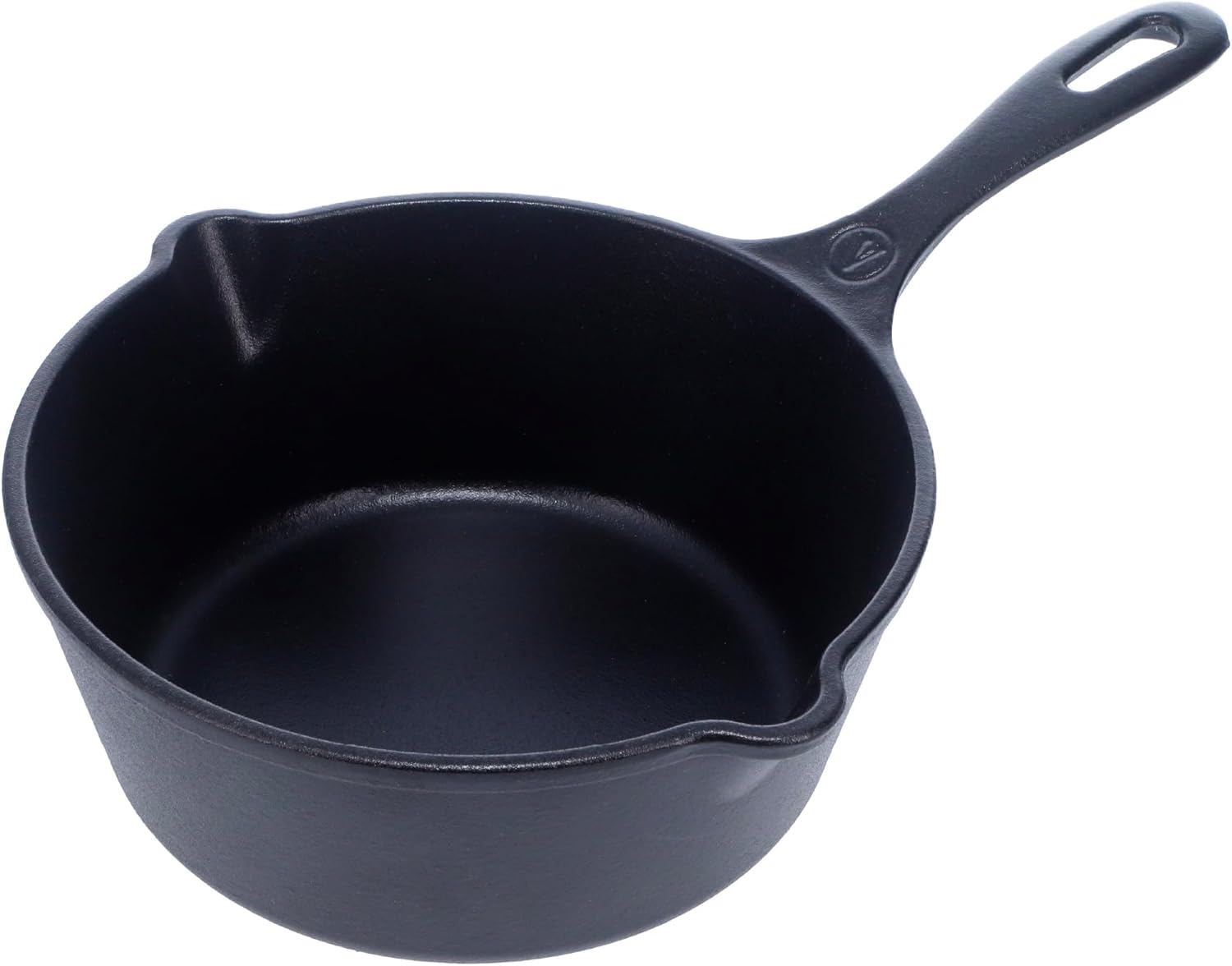
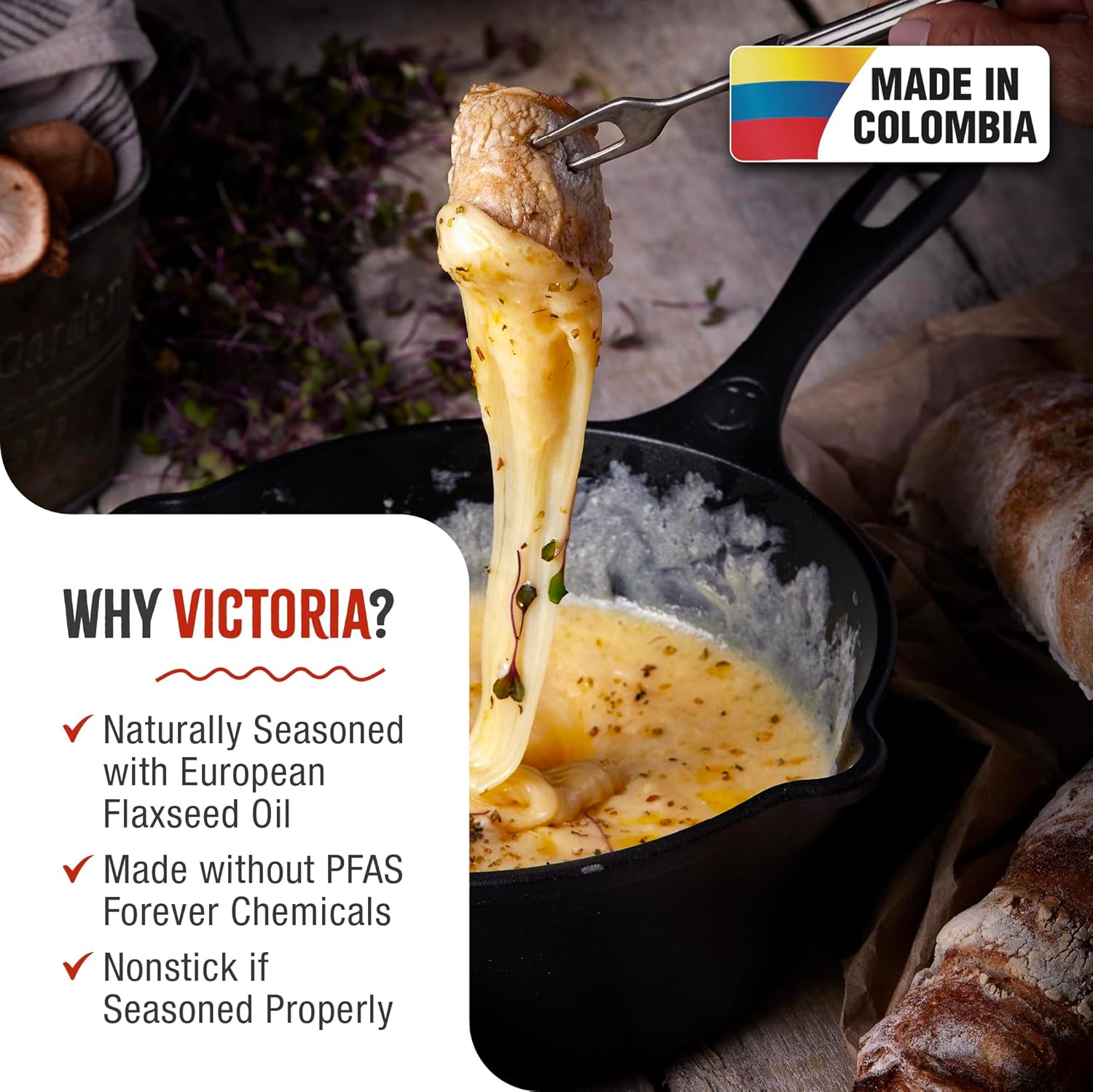
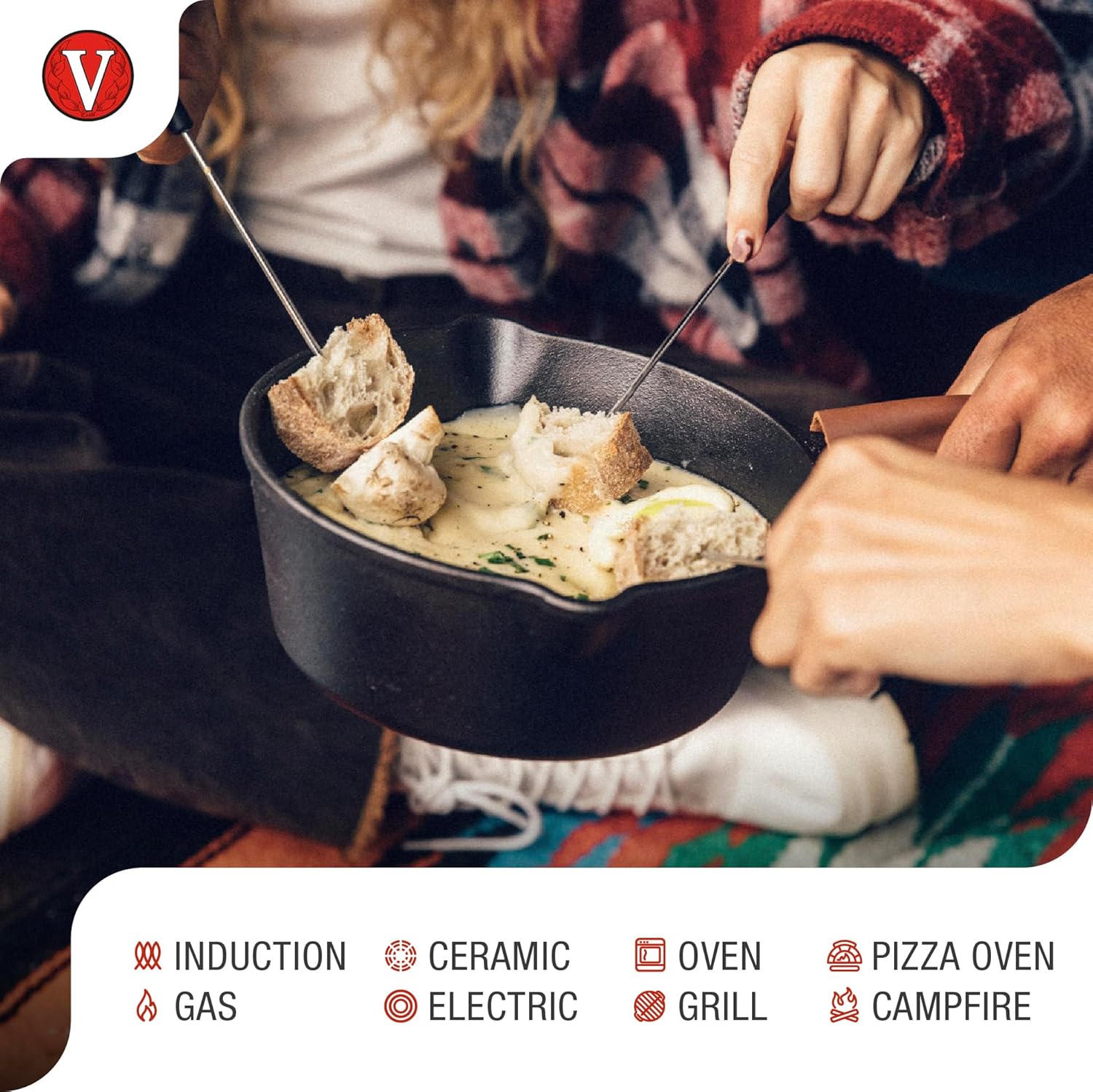
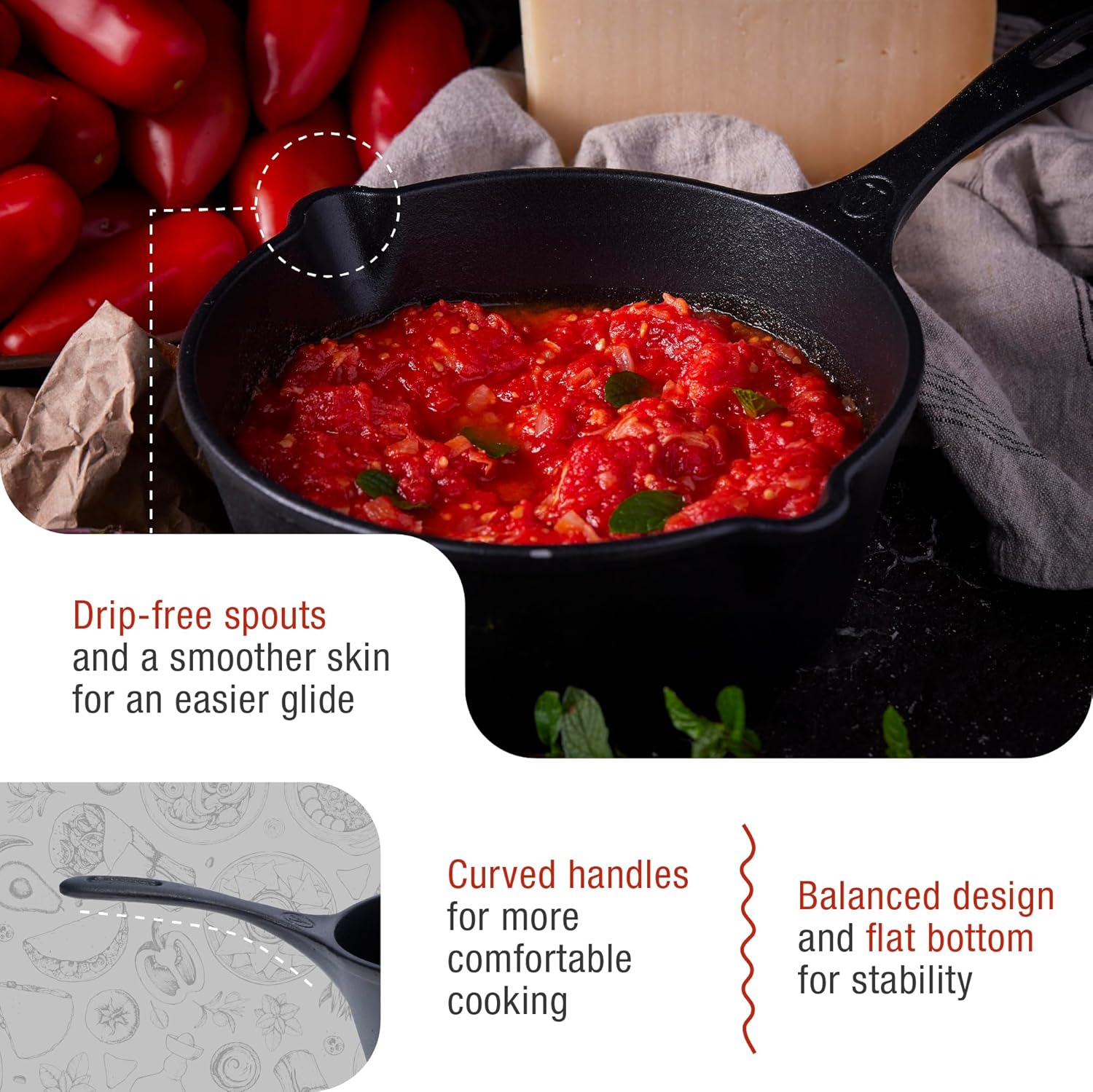
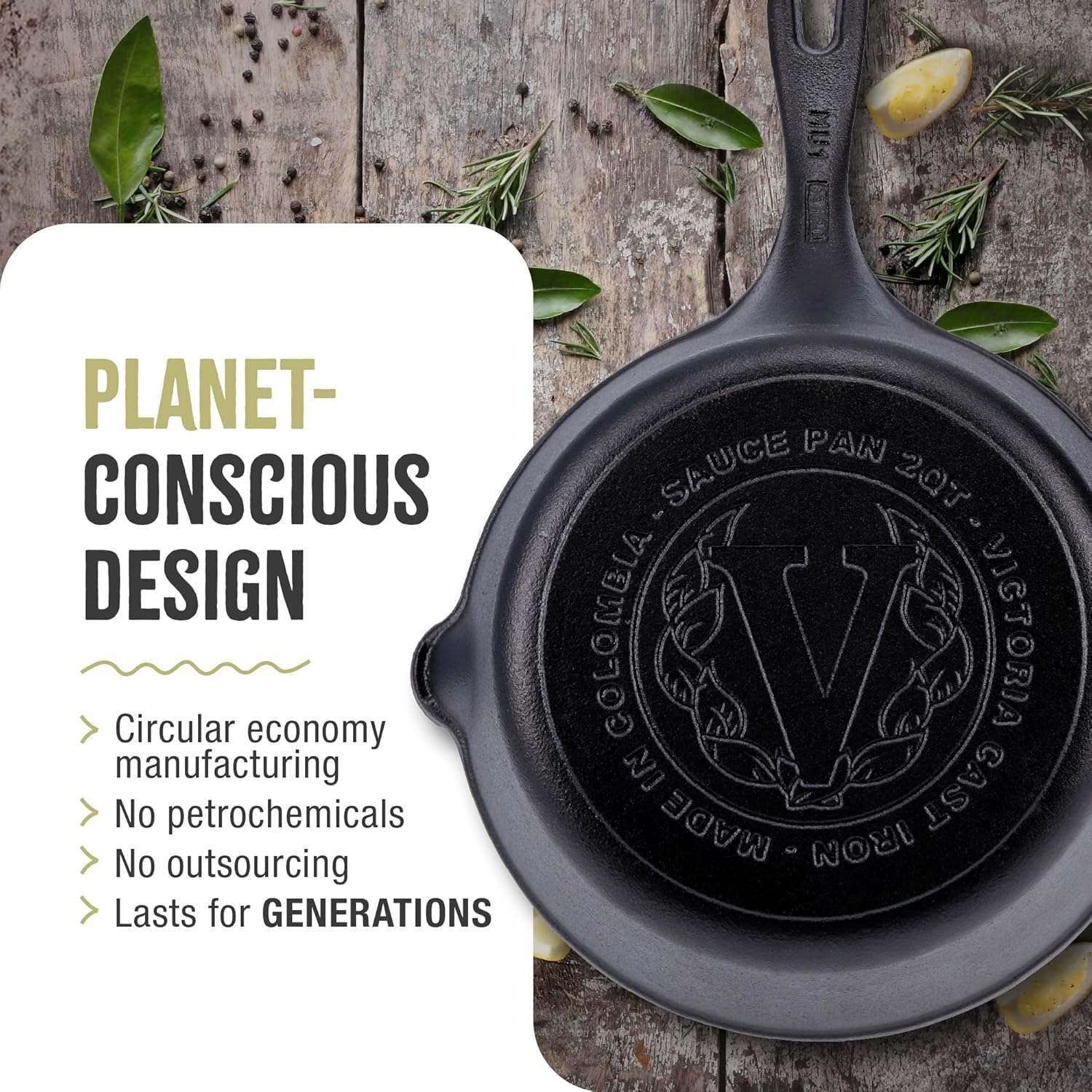
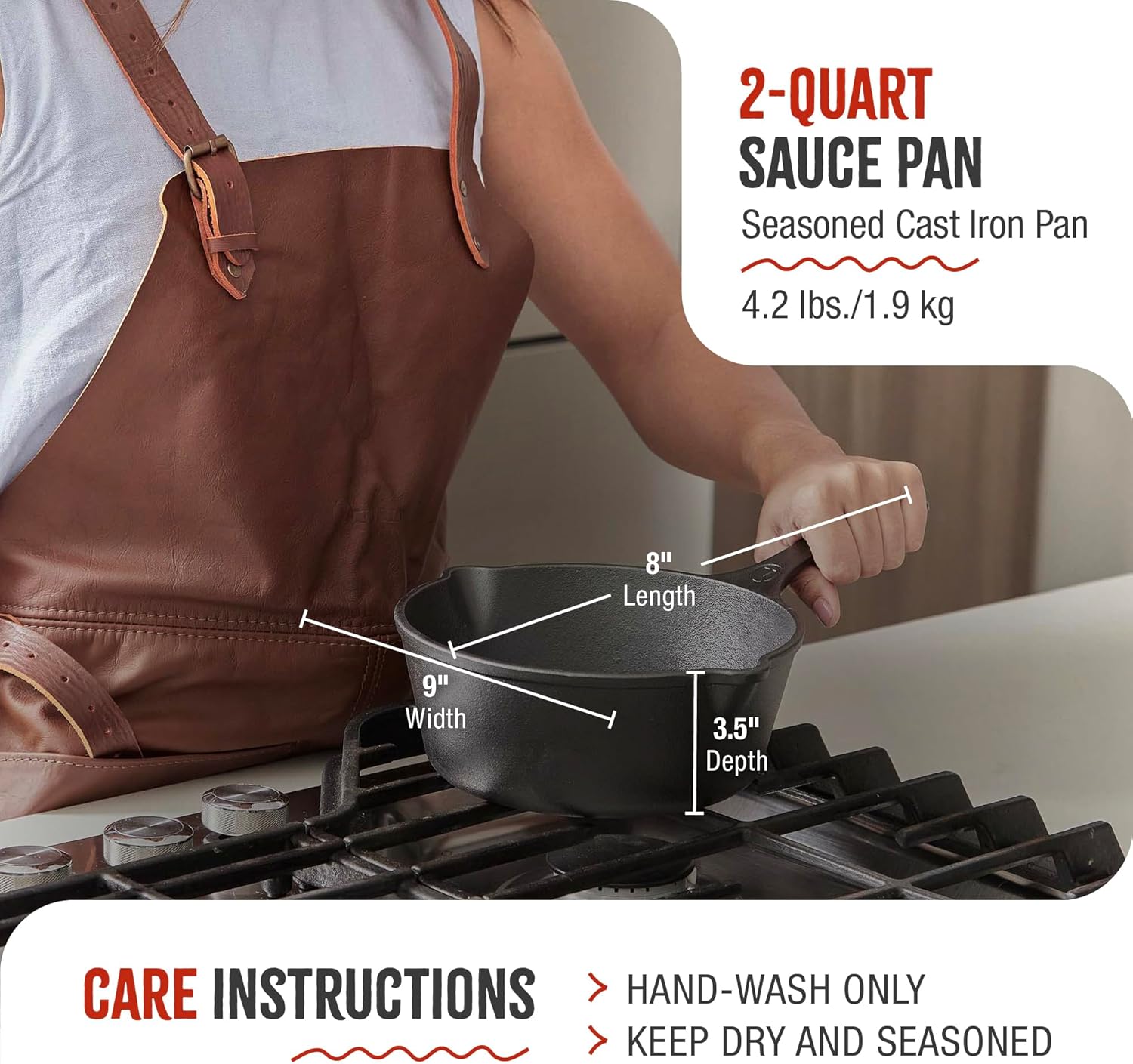
Price: $24.99 - $18.88
(as of Sep 09, 2025 02:05:53 UTC – Details)




